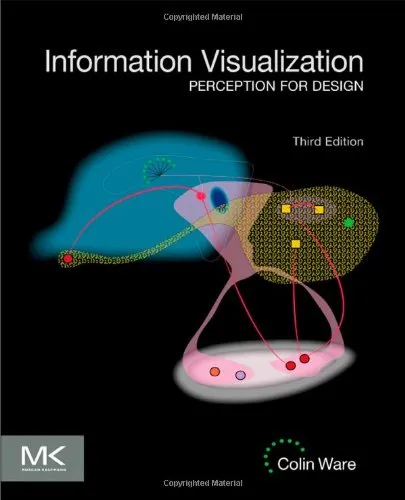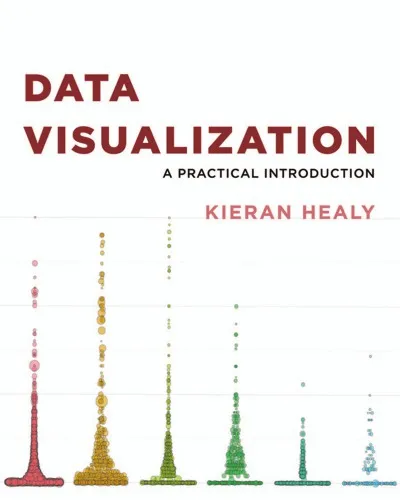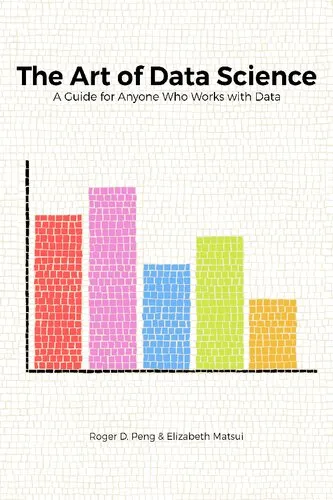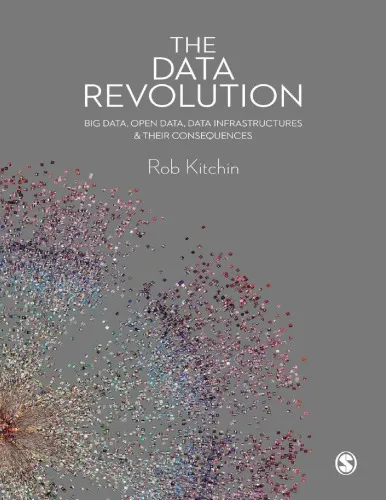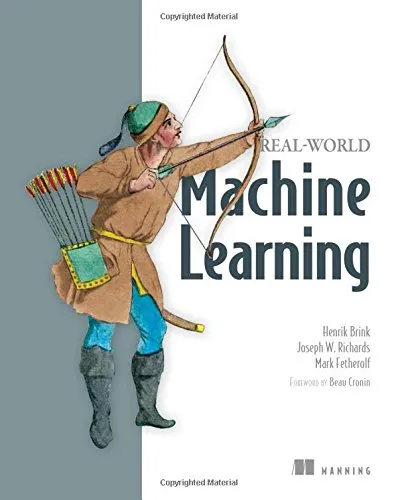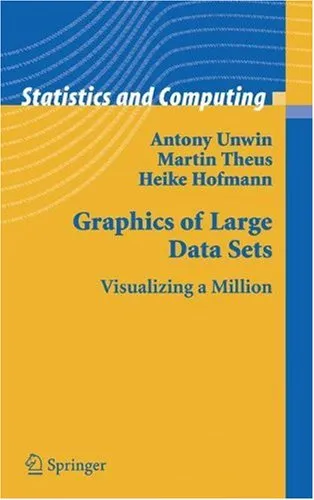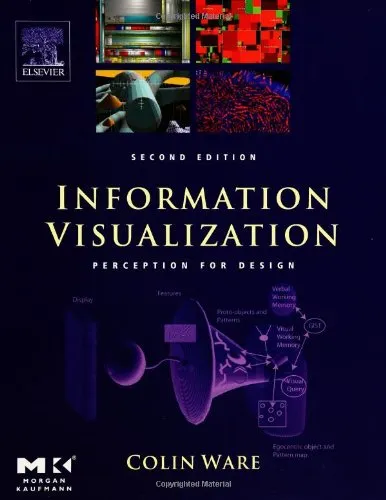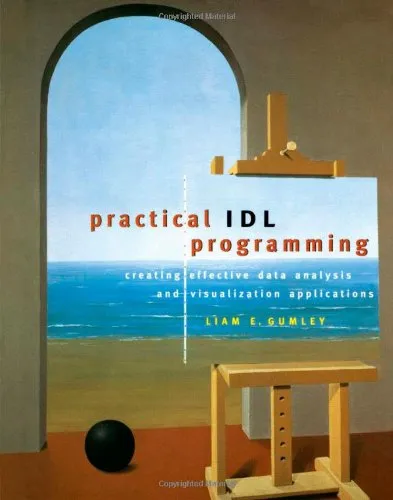Information Visualization, Third Edition: Perception for Design
4.6
بر اساس نظر کاربران

شما میتونید سوالاتتون در باره کتاب رو از هوش مصنوعیش بعد از ورود بپرسید
هر دانلود یا پرسش از هوش مصنوعی 2 امتیاز لازم دارد، برای بدست آوردن امتیاز رایگان، به صفحه ی راهنمای امتیازات سر بزنید و یک سری کار ارزشمند انجام بدینکتاب های مرتبط:
معرفی کتاب "Information Visualization, Third Edition: Perception for Design"
"Information Visualization, Third Edition: Perception for Design" یک راهنمای جامع و بینظیر است که به بررسی دقیق اصول ادراک انسان و کاربرد آنها در طراحی Information Visualization میپردازد. این کتاب نوشته من، کولین ویر (Colin Ware)، تلاش دارد تا پل میان علوم شناختی، طراحی اطلاعات و تکنولوژی ایجاد کند و به طراحان کمک کند تا ارتباطات بصری با تأثیری عمیقتر و کاربردیتر ایجاد نمایند.
خلاصهای از کتاب
هدف اصلی این کتاب، استفاده از دانش روانشناسی و دانش ادراکی برای طراحی مؤثرتر ابزارهای visualization است. ما در این کتاب، نحوه عملکرد مغز در پردازش اطلاعات بصری، قدرت مدلهای ذهنی، و روشهای طراحی دادههای پیچیده را مورد تجزیه و تحلیل قرار دادهایم. فصلهای کتاب به صورت تدریجی اصول طراحی را باز کرده و نقش cognitive sciences را در طراحی منطقی توضیح میدهند.
کتاب به سه بخش اصلی تقسیم شده است:
- معرفی مفاهیم اساسی در شناخت ادراک و حافظه بصری؛
- بررسی ابزارها و تکنیکهای طراحی برای ساخت Visualization مؤثر؛
- نمونهها و روشهای عملی برای پیادهسازی این اصول در پروژههای واقعی.
کتاب نه تنها جنبه تئوریک را پوشش میدهد، بلکه میکوشد تا با مطالعه موراد واقعی و ارائه مثالهای عملی، خواننده را برای بهکارگیری تکنیکهای پیشرفته آماده کند.
نکات کلیدی
- دانش ساختار و عملکرد شناختی انسان میتواند طراحی Visualization را به طرز قابل توجهی بهبود بخشد.
- استفاده از رنگ، اشکال و حرکات برای جلب توجه مخاطب باید به صورت علمی پایهگذاری شود.
- تکنیک Integration اطلاعات در Visualizationهای پیچیده بهویژه در هنگام کار با Big Data بسیار اهمیت دارد.
- شناخت محدودیتهای هنر ادراک بصری برای جلوگیری از overload اطلاعات، بحرانی است.
نقل قولهای معروف از کتاب
"We build visualizations to amplify cognition."
"Effective visualizations are the ones that speak to the brain in its own language."
اهمیت این کتاب
کتاب "Information Visualization, Third Edition: Perception for Design" بیش از یک مرجع است؛ این کتاب راهنمایی عملی برای هرکسی است که با طراحی دادهها و ارتباطات بصری سر و کار دارد. اهمیت این اثر در توانایی آن در پیوند دادن میان علم و طراحی است. برای طراحان رابط کاربری (UI/UX Designers)، تحلیلگران داده، مهندسین نرمافزار و حتی پژوهشگران علم شناختی، این کتاب میتواند روشهایی جدید و الهامبخش برای ایجاد تأثیرات بصری خارقالعاده فراهم کند.
در یک دنیای پر از داده، نیاز به ساخت داستانهایی که بتوانند افراد را جذب کرده و به درک بهتر موضوعات کمک کنند، اجتنابناپذیر است. کتاب من تلاش دارد تا این پل را بسازد و به همین دلیل از سوی متخصصین این حوزه مورد تحسین قرار گرفته است.
Introduction
Welcome to the world of information visualization, where data meets design and perception drives understanding. Colin Ware’s book, Information Visualization, Third Edition: Perception for Design, is a foundational work that bridges the disciplines of cognitive science, design, and data visualization. This text provides an in-depth exploration of how humans perceive visual information and how that understanding can be used to design effective visualizations. It’s essential reading for anyone who works with data, whether you are a designer, developer, scientist, or business professional.
The third edition of this book brings together decades of research and practical experience, updated with the latest insights into human visual perception and information processing. With a focus on actionable principles, each chapter equips readers with tools to create visualizations that are both aesthetically pleasing and functionally effective. Whether you are analyzing complex datasets or creating dashboards for decision-making, this book offers the theoretical foundation and practical guidance needed to communicate data effectively.
Detailed Summary of the Book
This book is structured around the idea that effective visualization design must adhere to the way humans naturally perceive and process visual information. Drawing from research in cognitive science and psychology, it explains how our eyes and brains work together to interpret data visually.
Topics covered include key concepts such as the pre-attentive processing of visual elements (shapes, colors, and patterns), the use of spatial positioning to represent data relationships, and the role of hierarchy and ordering in facilitating understanding. The book carefully balances theory and practical application—it not only explains why certain designs work but also provides actionable guidelines for achieving successful designs.
The third edition includes significant updates, including:
- New insights into the neuroscience of perception and how it applies to information visualization.
- Expanded chapters on visual attention and how to lead users to focus on the most important data points.
- Practical case studies that demonstrate how to integrate these principles in real-world scenarios.
- Coverage of emerging technologies like virtual reality and how they influence data visualization design.
At its core, the book is a guide to amplifying the clarity and effectiveness of visualizations, making it accessible and impactful for a broad audience of readers.
Key Takeaways
Readers of Information Visualization, Third Edition will come away with a wealth of knowledge, including:
- An understanding of how visual perception works and why it matters in design.
- Actionable guidelines to create more effective charts, graphs, and infographics.
- The importance of storytelling and how to use visualization to communicate compelling narratives.
- The role of interactivity in modern data visualization and how users engage with data.
These takeaways provide practitioners with practical tools for solving real-world information design challenges while adhering to scientifically validated principles.
Famous Quotes from the Book
Colin Ware’s writing is both informative and thought-provoking, capturing the significance of design in the world of data visualization. Here are some quotes that encapsulate the core messages of the book:
"Design is a process of taking visual elements and arranging them in a way that reduces cognitive load and increases understanding."
"Perception is the first stage of understanding; the better we can match visual design to human perception, the more effective our visualizations become."
"Good visual design is as much about what you choose to leave out as what you include."
These insights highlight the integration of scientific principles with artistic creativity, demonstrating why the book remains a cornerstone in the field of visualization.
Why This Book Matters
In a world where data is growing exponentially, the ability to extract meaning and communicate insights through visualization has never been more vital. This book is a critical resource because it grounds visualization design in human cognitive abilities, ensuring that designs do more than just look appealing—they communicate effectively.
The principles detailed in this book are timeless and applicable across industries. Whether you design dashboards, map geographical data, or create visual analytics for scientific research, this book offers a clear framework for leveraging the power of human perception to design tools that foster understanding.
Moreover, Information Visualization, Third Edition is not just about making better visuals—it’s about sparking change. It empowers readers to use design as a tool for collaboration, decision-making, and inspiring action. This is why it is widely regarded as a must-read for anyone serious about working in fields that involve complex information.
دانلود رایگان مستقیم
شما میتونید سوالاتتون در باره کتاب رو از هوش مصنوعیش بعد از ورود بپرسید
دسترسی به کتابها از طریق پلتفرمهای قانونی و کتابخانههای عمومی نه تنها از حقوق نویسندگان و ناشران حمایت میکند، بلکه به پایداری فرهنگ کتابخوانی نیز کمک میرساند. پیش از دانلود، لحظهای به بررسی این گزینهها فکر کنید.
این کتاب رو در پلتفرم های دیگه ببینید
WorldCat به شما کمک میکنه تا کتاب ها رو در کتابخانه های سراسر دنیا پیدا کنید
امتیازها، نظرات تخصصی و صحبت ها درباره کتاب را در Goodreads ببینید
کتابهای کمیاب یا دست دوم را در AbeBooks پیدا کنید و بخرید
1322
بازدید4.6
امتیاز0
نظر98%
رضایتنظرات:
4.6
بر اساس 0 نظر کاربران
Questions & Answers
Ask questions about this book or help others by answering
No questions yet. Be the first to ask!
